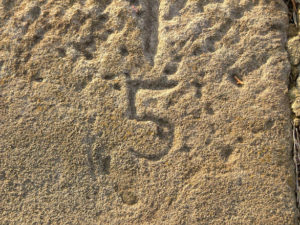 Welcome to this week’s Five from David
Welcome to this week’s Five from David
Your exercise tip – Bursitis in the shoulder and AC joint damage – what to do?
The main joints involved in the shoulder are the Glenohumeral, which is the joint between the humerus and the scapula (shoulder blade) fossa (or cavity) and is a ball and socket joint. It is as such very articulate but also susceptible to damage easily if not kept strong. You also have the Acromioclavicular joint which is between the clavicle and the acromion (part of the scapula/shoulder blade and a sliding joint). The main muscles and important anatomy are muscles in the neck (trapezius), the shoulder (deltoid), the chest (pec major), our upper arm (biceps and triceps), and the four muscles (rotator cuff or shoulder girdle) originating on the scapula. The shoulder girdle muscles play a major role in keeping the shoulder joint stable and strong in the joint
Two other features of importance are sub deltoid bursa and sub acromial bursa. Bursa are friction reducing features that can be like a ball bearing, a hot dog bun or a long thin cushion
Common problems are bursitis (inflammation of those bursa in the shoulder) and another called a strained AC joint (usually impact to the shoulder that has caused damage to ligaments that support the joint).
Bursitis can be an overuse injury which can be initiated by unstable techniques in some exercise i.e. a bench press, or poor posture leading to poor muscle control of the shoulder blade. Acromioclavicular joint damage is usually a specific impact like landing on the elbow and jamming the shoulder upwards or impact on the shoulder (contact sports) where the humerus and scapula are forced downwards and slightly inwards.
Exercise that helps bursitis are firstly formal diagnosis by an allied health professional. There can sometimes be confusion between bursitis and damage to the rotator cuff ligaments. Once it settles, exercises that retrain those shoulder girdle muscles are a good start. Adjusting techniques on pushing exercises to ensure that the shoulder is in the correct and safest position when moving are also advised.
AC damage is again a correct diagnosis and rest. Then going onto strengthening all the muscles in and around the shoulder. Correct the technique you use when in contact during sports or wear padding of sorts is another option.
Stay away from heavy pushing exercises are moving into an overhead position, pushing exercise with resistance or push ups until you get an all clear. Be careful of computer mouse work and the set-up of your work station where you are continually reaching out with extended arms. Other things to help are slings initially to take pressure off the damaged areas.
Your health tip – a good read about smoking and its effects.
Winter chill tip – protect those eyes while exercising
Try a thicker pair of socks or even two pairs while running, walking or exercising during these colder months. This can help with comfort levels and try and help stave off those chill blains that we sometimes experience.
Your life tips
Put down your phone and have a conversation with the person you are at dinner with. Spending time with someone, and then being away in the tech world, is a loss we often only miss when it is too late.
This week’s wise words
“Don’t accept that what’s happening is just a case of others’ suffering, or you’ll find that you’re joining in the turning away”
Pink Floyd, ‘On the turning away’
Have a great week and keep healthy in 2018. David.
